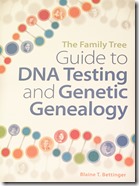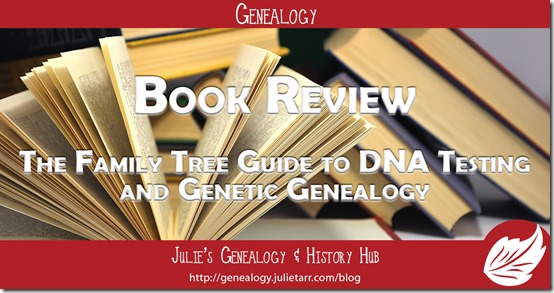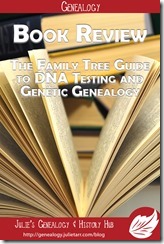 Title: The Family Tree Guide to DNA Testing and Genetic Genealogy
Title: The Family Tree Guide to DNA Testing and Genetic Genealogy
Author: Blaine T. Bettinger
Format: Paperback, Kindle
Published: 2016
My Rating: ![]()
![]()
![]()
![]()
The following review first appeared in the Federation of Genealogical Societies FORUM magazine (Spring 2017); reprinted with permission.
Blaine Bettinger has put together a wonderful book that encompasses all facets of genetic genealogy. The Family Tree Guide to DNA Testing and Genetic Genealogy is geared toward genealogists of all levels and is meant to serve as a primer for DNA testing, analyzing results, and how to use results to answer genealogy questions. This is not an in-depth guide for analyzing test results, although Bettinger does provide several examples for each type of DNA test, as well as examples for each major testing company and a few third-party tools.
In part 1, Bettinger goes over the basics of genetic genealogy and debunks several misconceptions. There is also a chapter that discusses ethics, which should not be missed—there are many things you should consider before taking DNA tests and certainly before asking others to test.
Each of the four types of DNA (mtDNA, Y-DNA, atDNA, and X-DNA) have a dedicated chapter in part 2. In these chapters you will find a fairly detailed discussion about each type including its description, its inheritance pattern, how the testing works, how to interpret results, and how to apply it to genealogy. Prior to reading this book I had next to no knowledge of mtDNA. Now, I understand how it works, how to interpret results, and in what situations the test is best utilized. I was familiar with Y-DNA, but after reading this book, I have a much clearer understanding of how to interpret the results and how best to utilize the analyzed information. Although both atDNA and X-DNA are something I work with on a regular basis, it was a nice refresher and I did pick up a few tips.
Most of the chapters in part 3 deal with analyzing test results. One chapter is dedicated to popular third-party tools that are designed to help with the analysis process. Another chapter discusses the ways in which complex genealogical mysteries can potentially be solved using DNA. There is also a chapter dedicated to DNA testing for adoptees. These three chapters provide a wealth of information and inspiration for those working with their test results and challenging puzzles. This part also contains a chapter on ethnicity estimates—so before you trade in your lederhosen for a kilt, be sure to read this chapter for an excellent overview of how ethnicity estimates are generated. Part 3 closes with a forecast of things to come in the genetic genealogy world; truly fascinating!
I highly recommend this book, especially to those who are thinking about diving into DNA testing, as well as those who are just starting to dabble. Those of you in these categories will find this one-stop reference extremely helpful.



Share your thoughts...